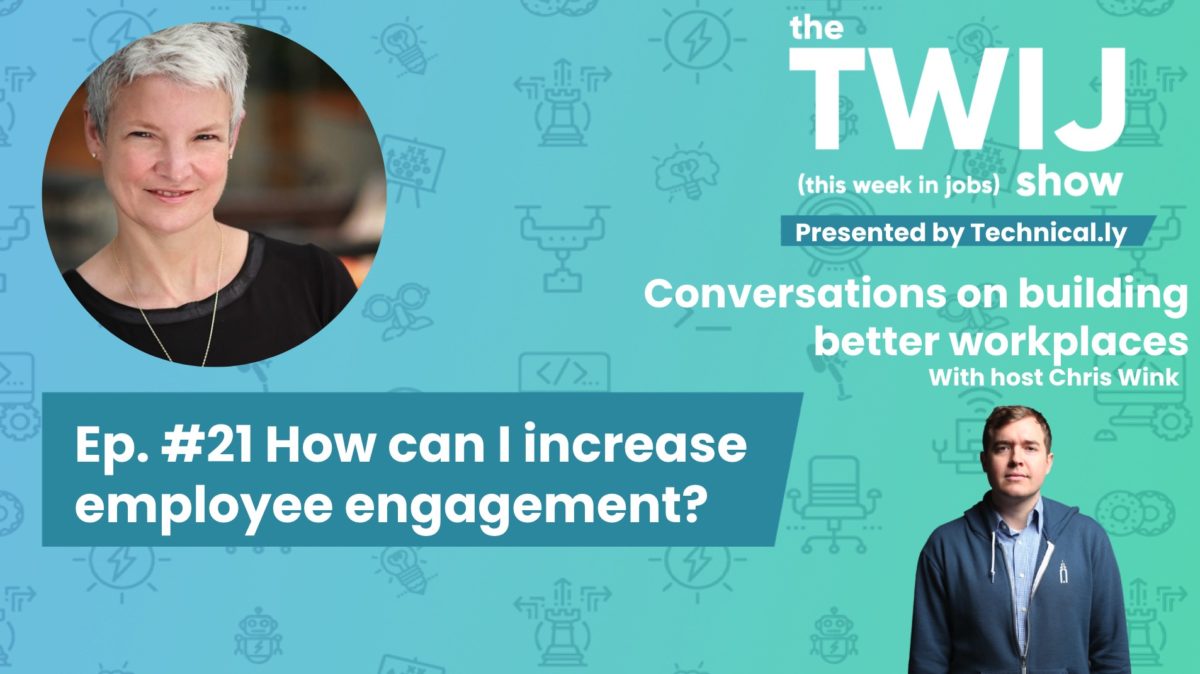Add a new acronym for your workplace emails to your direct reports: JSYK.
If you take a good, long, hard look at levels of employee engagement and workplace resilience, the most important lessons aren’t too complicated. Communicate consistently and frequently. Do it honestly and with empathy. Avoid surprises whenever possible.
That’s why Amy Leschke-Kahle has picked up the shorthand for a phrase she repeats frequently: “Just so you know.” This isn’t how she drops life-altering news. The goal, in fact, is that whenever possible, there are no major shocks. Instead, there is a slow and consistent dribble of information out from team leaders to their direct reports — maybe in weekly one-on-one meetings, the preferred medium for Leschke-Kahle.
In times of tumult, levels of employee engagement and workplace resilience are dire questions. It’s why for this week’s edition of The TWIJ Show, Technical.ly’s weekly conversation on building better workplaces, we spoke to Leschke-Kahle. She’s the VP of performance acceleration at The Marcus Buckingham Company, an ADP Company. Last month, its research team released its annual Global Workplace Study. The research is informed by point-in-time surveying of 25,000 people across a dozen countries. Though there are plenty of insights from the report, my conversation with Leschke-Kahle focused more on the tactics to take from the work.
“If you want employees who are more in, there’s one simple thing to do,” she said. “Pay more attention more frequently by saying, ‘I see you for the best of you.”
Management policies are often about telling people they’re broken, she said. We tell them they missed deadlines, missed targets, aren’t performing. Though no doubt there are times when there is a true and meaningful misalignment, that isn’t the norm, she notes. Start by assuming everyone whom you’ve brought onto your team is “amazing,” she said. What do we need to do to engage, develop and support this teammate of mine? The quality is there; great managers help activate it.
“How do we get that quality out?” she said. “It’s an investment strategy.”
That’s why there’s this focus on engagement and resilience, which are related but distinct. Engagement is how in you are in. Resilience is how able you are to bend and not break.
“With a sense of those two you get this really vivid picture of how healthy your workplace is,” she said.
To activate employee strengths, we do it with really frequent attention. You show love in a professional setting with attention, she said. Team meetings are helpful, but one-on-ones matter most. Every employee should have a productive weekly one-on-one with their “most important person.” This time is for the direct report, not the team leader.
The team leader should be asking: What are your priorities for the week? What are your blockers? How do I help?
To increase engagement, the team leader should build the habit of frequent updates and work to avoid any surprises. That’s where those “JSYK” emails and one-on-one updates are helpful. “Just so you know, this is being tested, or worked on, or developed, or tried.” “Just so you know, this is coming.” “Just so you know, this could happen.”
People want to grow and feel secure. Help your reports do that. Engagement can turn on quickly with enough of the right attention, but it also falls off quickly.
“It’s like a light switch,” Leschke-Kahle said. A few rough or distracting weeks can really hurt engagement quickly. That’s where resilience comes in. But too often organizations hurt engagement and then wear down resilience, too.
It’s why you must build this habit in your organization — “Frequency rules.”
She has one last warning: “You don’t need rubrics and scores and systems and tracking metrics for this.” Build rapport, keep it consistent and be open.
Policies, procedures and strategy are crucial for direction and consistency but it can easily become over-engineered, especially by well-intentioned operations professionals.
“In HR, we may have over-articulated strategy,” she said. “Over-invest in engagement with what matters most: your people.”







